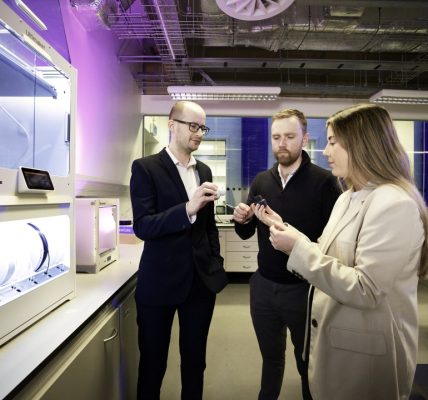Introduction
Space examination has everlastingly been a wellspring of interest and inspiration for mankind. As the excursion to examine past our planet heightens, degrees of progress in drive structures are ending up being dynamically huge. Perhaps of the most moderate thought causing aggravations in this field is Mass relocation Force Advances. This memorable method for managing space makes an outing in hopes to vanquish the limitations of standard drive techniques by giving speedier, more useful, and reasonable solutions for interstellar examination. In this article, we will examine the key turns of events, benefits, and future capacity of Flight Drive Headways, highlighting how it could shape the possible destiny of room examination.
What Are Exodus Propulsion Technologies?
Mass relocation Catalyst Developments suggests one more class of state of the art drive structures expected to overhaul space travel limits. Not the least bit like common substance based rocket drive, which relies upon consuming fuel to create push, Takeoff progresses using cutting edge principles of material science and planning to achieve pervasive execution. These progressions hope to diminish travel time, increase capability, and engage longer-range missions by using improvements like electromagnetic drive, nuclear blend, and molecule stimulus.
Key Components of Exodus Propulsion Technologies
Ion Propulsion Systems:
Molecule drive is one of the groundworks of Flight Stimulus Developments. By using electrically charged particles (particles) to make push, this system offers more noticeable eco-neighborliness diverged from compound rockets. Molecule catalyst systems have proactively been used in a couple of room missions, showing their actual limit with respect to significant space travel.
Electromagnetic Propulsion:
Electromagnetic stimulus discards the prerequisite for substance reactions by using electromagnetic fields to make force. Thoughts like the electromagnetic drive (EMDrive) have been proposed, in spite of the way that they stay under preliminary assessment. This development, if totally comprehended, could disturb our viewpoint on drive.
Nuclear Fusion Propulsion:
Blend based drive structures ensure immense power by outfitting the energy conveyed through nuclear mix reactions. Not by any stretch of the imagination like splitting based systems, mix drive could give a more sensible and solid push for interplanetary missions.
Solar Sails and Photon Propulsion:
Sun based sails use radiation pressure from light to create push. Photon force, on the other hand, uses directed light emanations to push space mechanical assembly. These methods are energy-capable and proper for long-length missions.
Benefits of Exodus Propulsion Technologies
The gathering of Mass relocation Impulse Headways offers different benefits for space examination:
Faster Travel Times
One of the fundamental furthest reaches of current space missions is the time expected to go between divine bodies. With Mass movement developments, branch out an amazing open door to Mars and the past could be drastically reduced, making human examination of distant planets more conceivable.
Increased Fuel Efficiency
Customary substance rockets require enormous proportions of fuel to achieve movement away from speed and backing push. Molecule catalysts and other significant level structures use fuel certainly more gainfully, lessening the general mass and cost of missions.
Enhanced Mission Duration and Capabilities
Long haul missions, for instance, researching the outer planets or interstellar space, require catalyst systems prepared for upheld push over extended periods. Flight Drive Developments are planned to satisfy these necessities, allowing rockets to travel further and lead more amazing coherent assessments.
Sustainability and Reusability
Many significant level stimulus progresses pressure practicality and reusability. By lessening fuel use and wear on parts, these systems add to more commonsense space examination.
Challenges Facing Exodus Propulsion Technologies
Despite their responsibility, Mass relocation Drive Advances face a couple of hardships:
Technical and Engineering Barriers
Various thoughts, such as nuclear blend impulse, remain in the preliminary stage. Making strong and adaptable structures requires basic assessment and planning forward jumps.
Cost and Funding
The improvement of state of the art impetus frameworks requires significant venture. Getting financing for examination, improvement, and testing is a critical test.
Regulatory and Safety Considerations
Propels like nuclear drive incorporate managerial obstructions and security concerns. Ensuring safe association in space is fundamental to getting public and official assistance.
The Future of Exodus Propulsion Technologies
The possible destiny of room travel depends upon steady advancement in drive development. As assessment propels, Flight Drive Developments could:
Enable human missions to Mars and other far away planets inside conceivable time spans.
Open the opportunity of interstellar travel and examination of contiguous star structures.
Decline the cost and normal impact of shipping off and staying aware of the rocket.
Facilitated exertion between space workplaces, exclusive organizations, and investigation associations will be basic to figuring out these possible results. Associations like SpaceX, NASA, and Blue Start are presently examining advanced drive systems, hailing a breathtaking future for the field.
Conclusion
Takeoff Drive Advances address a striking forward-moving step pursuing capable, legitimate, major areas of strength for and travel. By overcoming the limitations of ordinary drive, these progressions might perhaps open a new backcountry in space examination. As humanity continues to attempt the unthinkable, improvements in catalyst will be an essential part in trimming our pretentious journey.
Frequently Asked Questions (FAQs)
What are Exodus Propulsion Technologies?
Mass movement Stimulus Progressions suggest one more class of state of the art drive structures expected to chip away at the speed, efficiency, and practicality of room travel by using advancements like molecule catalyst, electromagnetic force, and nuclear mix.
How do Exodus Propulsion Technologies differ from traditional rockets?
Standard rockets rely upon substance fuel to create push, while Takeoff Drive Advancements use advanced genuine norms, such as electromagnetic fields and ionized particles, for more capable and plausible catalysts.
What is the potential impact of Exodus Propulsion Technologies on space exploration?
These progressions could basically diminish travel times, improve eco-kind disposition, engage longer missions, and make human examination of far away planets more realistic.
Are any Exodus Propulsion Technologies currently in use?
vIon impetus structures, an essential piece of Mass migration degrees of progress, have proactively been utilized in missions like NASA’s Most vital light vehicle. Different movements, such as atomic mix drive, are at this point being managed.
What challenges do Exodus Propulsion Technologies face?
Critical challenges consolidate particular deterrents, high improvement costs, and managerial concerns, particularly for nuclear based stimulus structures.





